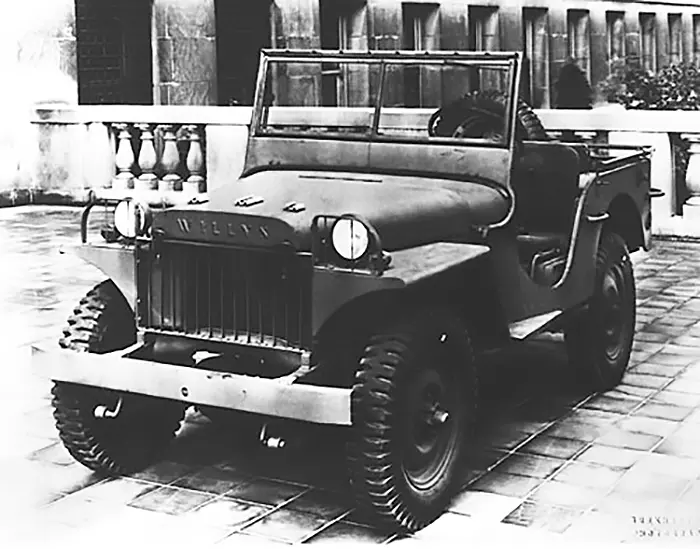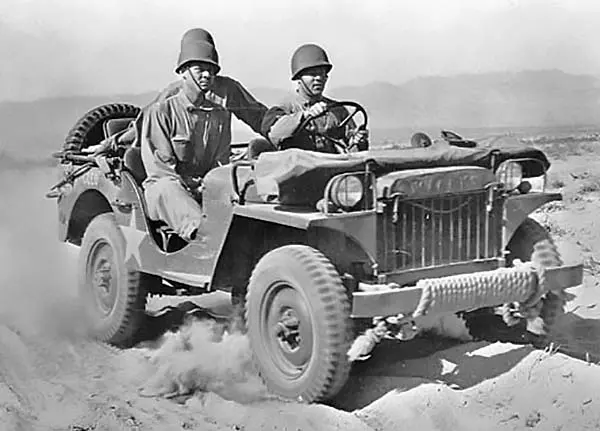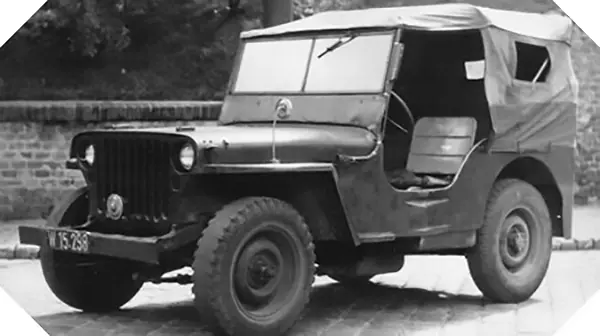Willys MB
The Army spent more than two decades looking at different alternatives for a light, high speed, and flexible military vehicle to serve both on the front lines of battle and in support.
Willys had been working on a vehicle that they believed could serve in this role one year prior to the Army requesting one. One of the provisions in the original military specifications, a 1300 lb weight would prove to be a problem for Willys, with the company instead believing that performance and sturdiness were more important. The idea was supported by both Ward Canaday and Delmar Roos and became the central focus of the designers of the Willys pilot vehicle. Another possible point of contention was in the choice of engine. Ford and Bantam both chose underpowered and equally non-weight compliant engines for this new vehicle. Both the Austin engine in the Bantam and the Ford engine were in line with the weight requirements of the military, but were lacked the power of the heavier Willys engine. The Army would later raise the maximum weight to 2160 lbs, which once again none of the automakers complied with (Wells, 19-21).
The Willys MA beat out vehicles put forth by Ford and Bantam (which ironically were later built for the Russian army) to win the lucrative military project of creating a lightweight, maneuverable, battlefield transportation weapon. The military required a few changes to the original MA, with the new version, the MB, beginning production in late 1941. Ironically, Ford was called in to help production of the MB due to fears from the Army that the single production facility owned by Willys was a possible target for sabotage or bombing.
There were numerous differences between the MA and MB. First and foremost, the grille on the MB actually followed the design of the Ford concept vehicle. Other cosmetic changes included the changing of the headlamps. Mechanical changes included the removal of the vacuum ignition system, the use of a standardized military battery and electrical system, improvements to the tie rods and spring shackles through the use of improved seals, and moving the hand brake to the center of the vehicle so that both the driver and passenger could utilize it (ASME, 3).
The approximately 650,000 Willys MB's built by Ford and Willys would go on to serve in every single theatre in World War II in varied roles, such as: machine gun fire mount, reconnaissance vehicle, ambulance, limousine, ammo bearer, wire layer, pack mule, and even as taxis. General George C. Marshall deemed the Willys MB to be "America's greatest contribution to modern warfare."
The post war period saw the MB converted to civilian use. The newly monikered CJ (Civilian Jeep) was closely based on the MB, with civilian necessities such as a windshield, windshield wipers, tailgate, and civilian bumpers added. The CJ line, which would be constantly tweaked while still retaining its off road prowess, would be in production until Jeep discontinued the model in 1986. In 1991, the American Society of Mechanical Engineers honored the MB by granting it the title of "International Historic Mechanical Engineering Landmark."



